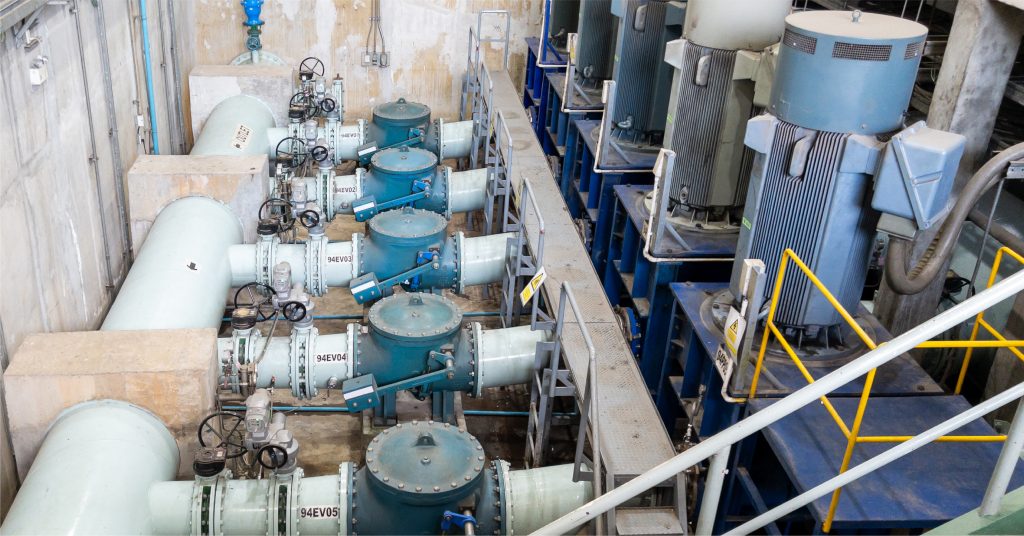Water scarcity is a growing concern across the globe, with many regions experiencing severe shortages. Desalination plants are emerging as a critical solution to this problem, providing a reliable source of fresh water by removing salt and other impurities from seawater.
In this comprehensive guide, we will explore the significance of desalination plants, their role in combating water scarcity, the different processes involved in desalination along with Ion Exchange’s contributions to wastewater treatment and the solutions it provides.
What are Desalination Plants?
Desalination plants are advanced facilities designed to convert seawater into potable water, making it safe for human consumption and irrigation. These plants use various technologies to remove salt and other minerals from seawater or brackish groundwater, producing fresh water. Desalination is particularly important in arid regions and islands where freshwater resources are limited or nonexistent. The process not only ensures a steady supply of high-quality drinking water but also supports agricultural and industrial activities, thereby contributing to economic development.
How Does Desalination Combat Scarcity?
Desalination plants play a crucial role in addressing water scarcity by providing an alternative source of freshwater. With the world’s population growing and climate change exacerbating water shortages, the importance of desalination cannot be overstated. By tapping into the vast reserves of seawater, desalination plants offer a sustainable solution to meet the increasing demand for fresh water. This technology is especially beneficial in coastal regions where traditional water sources are insufficient to meet the needs of the population.
The Role of Ion Exchange in Water Treatment
Ion Exchange, a leading company in the water treatment industry, offers a comprehensive range of products and solutions for desalination plants and wastewater treatment facilities. With over two decades of pioneering experience, Ion Exchange has anticipated the impending water scarcity by advocating for water recycling and integrating various separation processes, including physico-chemical, biological, and membrane methods, to maximize water recovery.
Recognizing the need for alternative water sources due to limited freshwater availability, Ion Exchange took a significant step in 1997 by commissioning India’s largest seawater reverse osmosis plant. Since then, the company has continued to develop and install large-capacity desalination plants for clients in India and abroad, providing sustainable solutions to the global water crisis.
Ion Exchange’s Innovative Product Range
Ion Exchange offers a diverse range of products and solutions for water treatment, including:
MEMBRANE SOLUTIONS
- Reverse Osmosis: Reverse osmosis (RO) is a technique that converts seawater into freshwater by forcing it through specialized membranes using unique filters. These membranes keep the salt out. RO is easy to expand for more water and can use less power if we add energy-saving systems. But it’s important to clean the seawater first, so the filters work well. With energy-saving systems, we can use 30 to 40 percent less power. Therefore, reverse osmosis (RO) is an effective method for obtaining fresh water from seawater.
- Electrodialysis: Electrodialysis is a technology that employs specialized membranes and electricity to separate salts from seawater, serving purposes beyond producing drinking water. This process can also be utilized to produce salt, desalinate soy sauce, and recover valuable substances from saline wastewater. Therefore, its applications extend well beyond just drinking water, encompassing various other beneficial uses.
THERMAL SOLUTIONS
The thermal process mainly uses three different technologies: MSF, MED, and MVC. Their Thermal Power JV between NTPC and TNEB boasts a capacity of 19.8 MLD for 3 x 500 MW units. All three processes are equipped with condenser tube bundles, which are energy-efficient and adaptable to different heat sources.
- Multi-Stage Flash Evaporation (MSF): MSF involves heating seawater in successive stages to evaporate water and collect distilled water. It operates at a higher temperature range of 90 to 110°C.
- Multi-Effect Distillation (MED): MED employs multiple evaporation stages at reduced temperatures to minimize energy consumption. It is highly reliable, adaptable, and has low maintenance costs.
- Mechanical Vapor Compression (MVC): MVC relies on compressing vapor to evaporate water, making it a reliable and simple-to-operate technology.
These products are designed to meet the varying needs of desalination plants and other water treatment facilities, ensuring a reliable supply of clean water. In addition to these technologies, their Oil & Gas plant has a capacity of 26.4 MLD, their ceramics plant has a capacity of 1.5 MLD, and their fertilizer plants have a capacity of 40 MLD.
Conclusion
Desalination plants are essential in the fight against water scarcity, offering a sustainable solution to provide fresh water from seawater. These facilities provide a reliable and sustainable source of potable water, ensuring water security for communities and industries alike. Companies like Ion Exchange play a critical role in enhancing the quality of water produced by providing the necessary technologies and products to support these efforts.
For more information on desalination plants and how Ion Exchange can help with your water treatment needs, contact us today.


